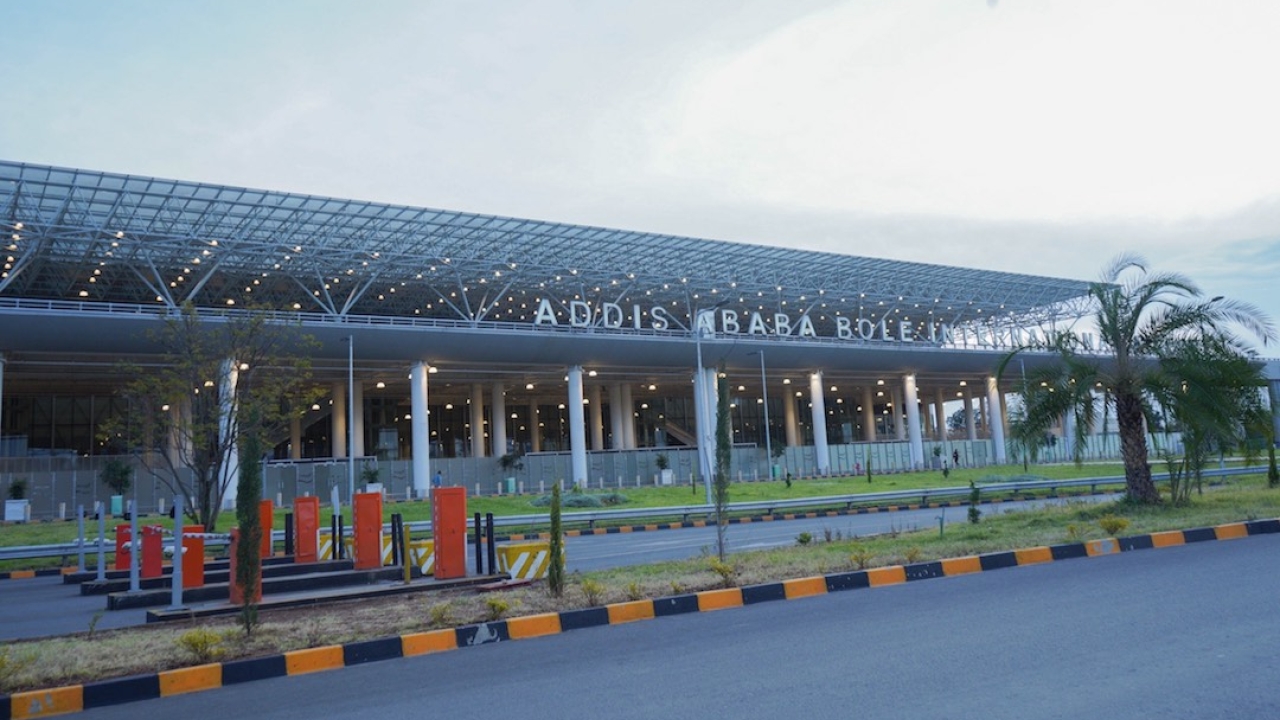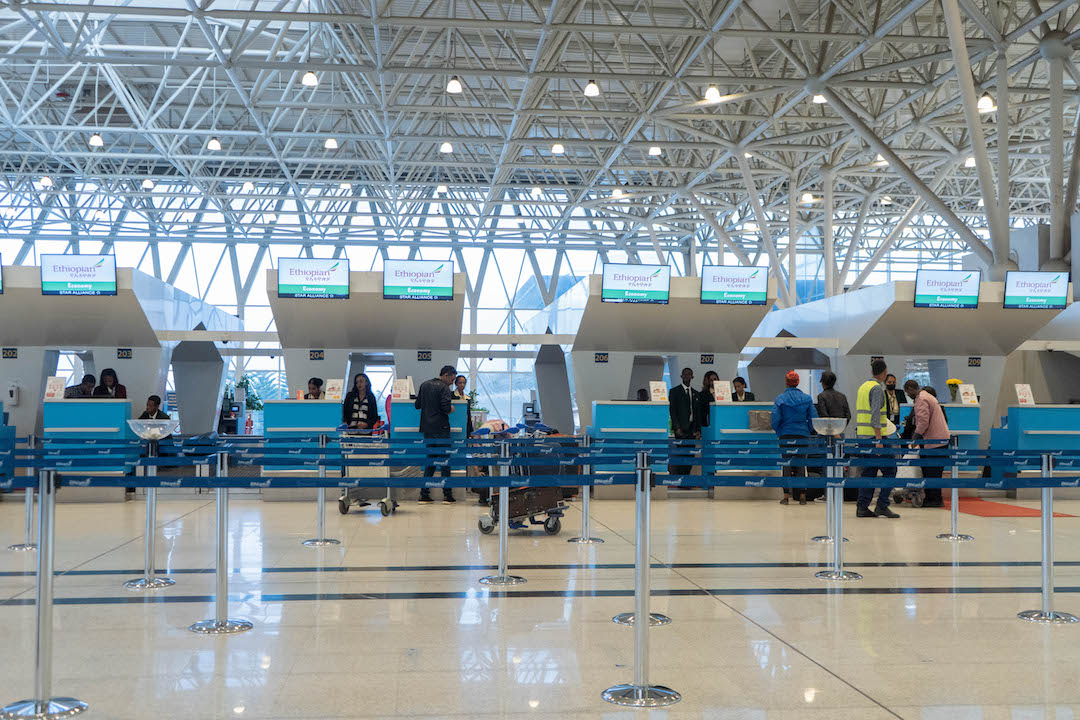Welcome to the super Bole
Ethiopian Airports has been undertaking a massive expansion at Addis Ababa Bole International Airport since 2014. Now, work on the third and final phase of the project is near completion.

Transformed: Bole International Airport can now handle 22 million passengers a year. Picture: Antheneh Girma.
Ethiopian Airports has a plan to become the leading airport company in Africa by 2025 and Bole International is its flagship project.
In the expansion project first phase, the international terminal II’s floor area was expanded from its original 48,000sqm with a further 74,000 sqm. It meant that the passenger handling capacity rose from six million per annum to some 22 million.
Modern duty free shops, cafés and restaurants are sprawling in the spacious terminal. Cravings, Pizza Hut and Burger King are among the international restaurants that serve departing passengers.
Ethiopian Airlines runs a spacious business-class lounge and Star Alliance platinum and gold business-class lounge.
Ethiopian also recently inaugurated an in-terminal hotel that has 96 rooms, a bar and restaurants that cater for passengers 24 hours-a-day. Exhausted travellers can get a massage in the hotel.
“Transit passengers who have a long lay-over time but do not wish to go out into the city can wine and dine and sleep here,” explained Daniel Tsige, director, Ethiopian ground service. “Most of them are business-class passengers who book online. They get the service they are used to receiving on board the aircraft.”
Ethiopian has also built a five-star hotel a few minutes’ walk away from the airport. It has 373 rooms, various bars and restaurants, conference halls, a swimming pool, and fitness centre. Currently, the airline is completing the construction of a second hotel with 627 rooms in the same locality. When completed the Ethiopian Skylight Hotel complex will have 1,000 rooms.
In the second phase of the airport project, Ethiopian Airports has completed the construction of the VIP terminal. This has two floors featuring restaurants, a press briefing room, a meeting hall and cocktail ballroom, plus a VIP saloon.
There are three different access ways for diplomats, senior government officials, and heads-of-state. It has its own car park and access road.
Addis Ababa is the seat of the African Union, the United Nations Economic Commission for Africa (UNECA) and other international and regional organisations. “As Addis Ababa is the political capital of Africa, the construction of the VIP terminal was crucial,” explained Ethiopian Airports CEO, Eskinder Alemu.

The third phase of the expansion – the domestic terminal 1 – is near completion and will transform the facility into an international-standard terminal.
When the project is fully complete, the Addis Ababa airport will have the capacity to handle up to 25 million passengers annually. Before the outbreak of Covid-19 it was handling 12 million.
In addition to being the Ethiopian Airlines hub, some 13 foreign carriers also operate scheduled flights to the airport.
It’s been a considerable international effort to get this far. The China Communications Construction Company (CCCC) is the contractor, while the French firm, ADPI, is project consultant. The passenger terminal expansion building is designed by CPG, a renowned Singaporean company. EXIM Bank of China has financed the project, the total cost of which is estimated at 500 million dollars.
“Addis Ababa Airport has become the largest gateway to Africa. To meet the growing demand we are constantly investing in the infrastructure,” Alemu said.
Ethiopian Airports has also undertaken work on the tarmac. The apron, which used to accommodate 53 aircraft, now can handle 75 at a time. The authority has also built a separate stand for general aviation light aircraft, operated by private operators.
The runways have been upgraded and maintained. Three new taxiways have been created to double the capacity. This has increased the number of arrivals and take-offs the airport can handle.
Ethiopia has outlined an ambitious growth plan, dubbed vision 2035, which aims to increase the number of aircraft to 271 from the current 140 and see passenger traffic rise to 67 million per annum. This has prompted the state-owned aviation group to plan to build a new mega airport outside of Addis Ababa.
According to Alemu, the planned airport will have four runways, one big terminal and a commercial area. It will have a capacity to handle 80-100 million passengers per annum.
“It will be comparable with all the major known international hub airports,” Alemu said. The total cost of the project is estimated at $5 billion.
Stay up to date
Subscribe to the free Times Aerospace newsletter and receive the latest content every week. We'll never share your email address.


